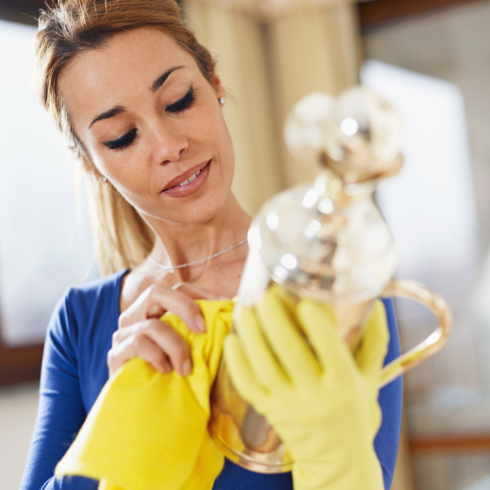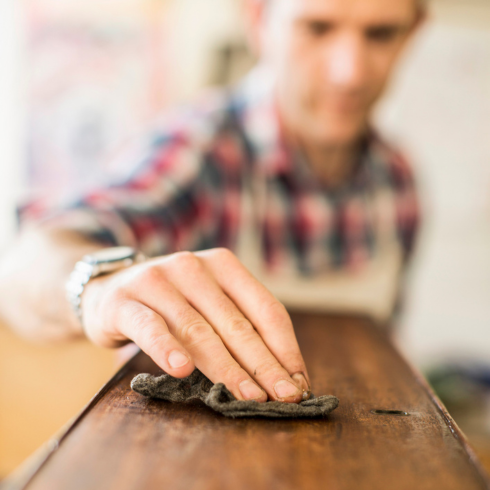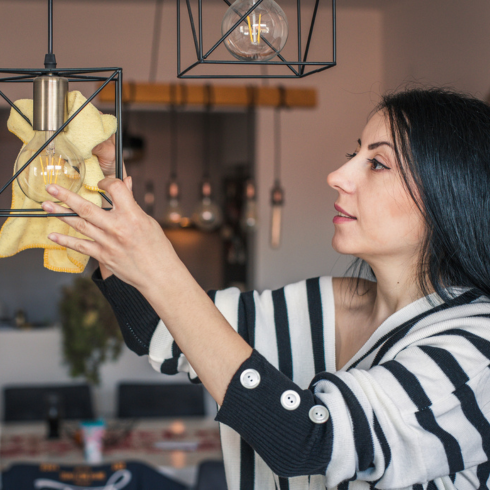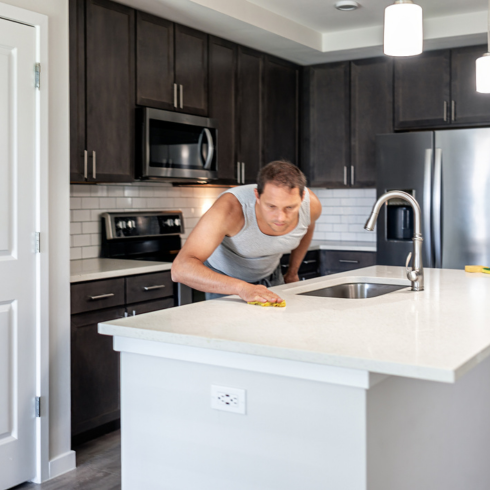Water is a glorious cleaning and sanitizing tool. It’s also more plentiful — and cheaper — than the average cleaning product, but that doesn’t mean it works for all household items when it comes time for a deep clean.
Whether you’re looking for quick tidy-up hacks or tips on how to clean items that require a bit more elbow grease, here are a few reasons why water shouldn’t always be your cleaning go-to.

Electronics
This might seem like a bit of a no-brainer — after all, electronics and moisture aren’t exactly known to go hand-in-hand. But sometimes, in a mad dash to quickly clean up before guests arrive, we can momentarily forget this fact.
For electronics — from laptops and keyboards to game consoles and TVs — the simplest method is to dust with a lint-free microfibre cleaning cloth. For more visible stains that require a little extra attention, you can lightly dampen a soft cloth with water (with an extra emphasis on “lightly”) and wipe from top to bottom in an ‘S’ pattern.

Silver and Brass
Water will wear away at the protective coating on your silver and brass home items. It’s inevitable. The damage won’t be apparent right away, but a few years down the road you’ll notice that they’ve started to tarnish.
Instead, opt for a vinegar and baking soda combo and wipe everything down with a soft cloth. This method also works well if your items are already tarnished — they’ll be restored in no time.

Wood Floors (or Any Wood Furniture)
The temptation to use water to wash away stains and spills on our hardwood floors is sometimes too great. But, we must resist, even though most floors include a water-resistant finish (spoiler alert: it wears off over time).
Water will ultimately eat away at the wood floors’ protective finish over the years, even resulting in discolouring and swelling in worst case scenarios.
All you really need is a lightly damped microfibre mop to get out those tough stains; otherwise dry-mopping regularly will do the trick. These same rules apply to laminate flooring.

Gas Range Burners
Water can wreck your igniters over time. The earliest sign of this is excessive clicking without actually turning on.
What you’ll need instead is a non-abrasive scrubbing pad (or soft damp cloth) and a special cleaning solution or trusty vinegar/baking soda combo.

Indoor Brick
Brick is hardy — it’s accustomed to outdoor elements. But what about indoor bricks that aren’t exactly used to a little wear and tear?
Repeatedly washing a brick wall, for example, can damage its protective sealant. Although it might be more tedious, wiping away the grime with a slightly damp cloth or a brush (for those really grimy spots) will work better in the long run.

Pollen Stains
Picture it: You’ve just received a beautiful bouquet of flowers… when it drops on the floor or rubs up against your favourite sweater.
Water can make even the smallest pollen stains worse, whether on clothing or furniture, so it’s best to avoid it at all costs. If pollen gets on the floor, a handheld vacuum should do the trick.
When it comes to clothing, lift off pollen with Scotch tape, wash the item with detergent, air dry and then blot with rubbing alcohol.

Leather
Being gentle with leather is key. Water can remove the colouring on leather products and eradicate its natural oils, leaving it looking dry and cracked.
Instead, opt for a mild soap/water combo on a barely damp cloth for best results. Let the item air dry for a sufficient amount of time afterward.

Antiques
For a simple clean, mild dish soap diluted in water should do the trick: just ensure you’re using a slightly damp cloth. It’s important that the cloth is barely wet when you use it — moisture can damage wood and brass, especially on a piece that’s already older than 50 years.
For quick cleans, a generic duster will work.

Light Fixtures and Outlets
Use dry cloths or a gentle duster for quick cleans and a simple combo of mild soap and a lightly damp cloth for deeper cleans.
For a more thorough clean, take the light fixture apart and clean each piece individually. Make sure all the pieces are gently towel-dried before replacing.

Marble or Stone Countertops
Although lemon and/or vinegar are often a winning combo when it comes to cleaning many household items, that’s not the case with marble or stone countertops.
While water can remove the protective sealant on these high-end items — damaging grout and caulking in the process — the acid found in lemon and vinegar will also eat away at the coating.
Instead, skip all of the above and opt for soft microfibre cloths or specialty stone or marble cleaners.
Home Network your inbox.
By clicking "SIGN UP” you agree to receive emails from Home Network and accept Corus' Terms of Use and Corus' Privacy Policy.




